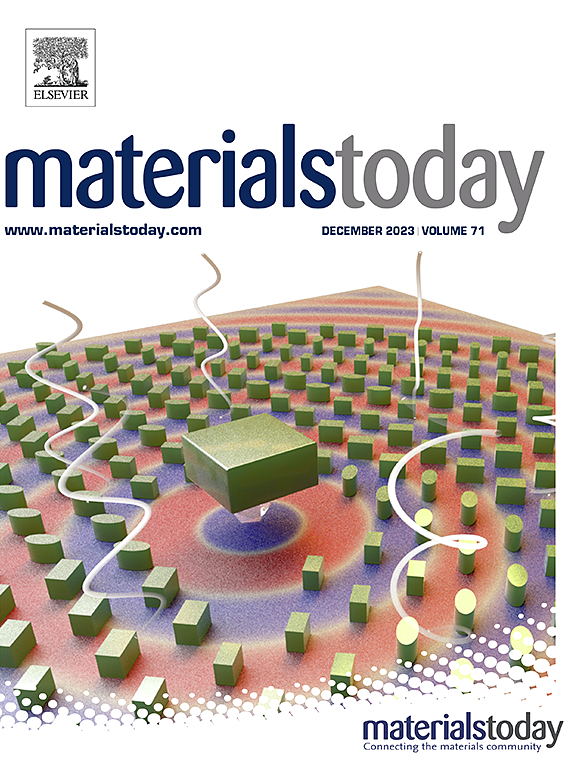Printing high-resolution conformal electronics on meter-scale surfaces using template-confined microfluidics
IF 21.1
1区 材料科学
Q1 MATERIALS SCIENCE, MULTIDISCIPLINARY
引用次数: 0
Abstract
Printing multifunctional surficial electronics on free-form structural parts, components, or equipment is critical for seamless integration with artificial intelligence. However, efficiently fabricating high-resolution complex patterning on arbitrary large-area substrates remains challenging. Herein, a template-confined microfluidic method that synergistically combines soft-imprinting and selected-location printing is reported for scalable printing of conformal electronics. This method allows precise printing of multiple materials and structures on large-area flexible/rigid and flat/curved substrates. The printed line width, confined by microarchitectural templates, reaches a high resolution of 300 nm. The microarchitecture topography is systematically investigated to optimize the wicking effects within the cross-scale templates. As a result, a phased-array antenna on a 1.25-meter-scale 3D surface can be fabricated in just 20 min due to the multi-directional parallel wicking occurring at multiple printing locations. Additionally, the printed circuits, embedded within and protected by the microarchitectural template, exhibit exceptional robustness by maintaining their initial resistance even after undergoing 600 cycles of an abrasion test. Furthermore, high-precise printing of commonly used functional nano-inks and graphics printing on arbitrarily curved substrates were also realized. Lastly, the printed multifunctional sensing platforms and the conformal antennas show promising applications in intelligent detection and advanced aerospace vehicles.

使用模板约束微流体在米级表面上打印高分辨率共形电子器件
在自由形式的结构部件、组件或设备上打印多功能表面电子器件对于与人工智能的无缝集成至关重要。然而,在任意大面积基板上高效地制造高分辨率复杂图案仍然是一个挑战。本文报道了一种模板约束的微流体方法,该方法协同结合了软压印和选择位置印刷,用于保形电子的可扩展印刷。这种方法允许在大面积柔性/刚性和平面/弯曲基材上精确打印多种材料和结构。受微结构模板的限制,印刷线宽达到300纳米的高分辨率。系统地研究了微结构地形,以优化跨尺度模板内的排汗效果。因此,由于在多个打印位置发生多向平行吸芯,可以在20分钟内在1.25米尺度的3D表面上制造相控阵天线。此外,嵌入在微结构模板内并受其保护的印刷电路,即使在经历600次循环磨损测试后,仍能保持其初始阻力,表现出非凡的坚固性。此外,还实现了常用功能纳米油墨的高精度印刷和任意曲面基板上的图形印刷。最后,打印的多功能传感平台和共形天线在智能探测和先进的航天飞行器中具有广阔的应用前景。
本文章由计算机程序翻译,如有差异,请以英文原文为准。
求助全文
约1分钟内获得全文
求助全文
来源期刊

Materials Today
工程技术-材料科学:综合
CiteScore
36.30
自引率
1.20%
发文量
237
审稿时长
23 days
期刊介绍:
Materials Today is the leading journal in the Materials Today family, focusing on the latest and most impactful work in the materials science community. With a reputation for excellence in news and reviews, the journal has now expanded its coverage to include original research and aims to be at the forefront of the field.
We welcome comprehensive articles, short communications, and review articles from established leaders in the rapidly evolving fields of materials science and related disciplines. We strive to provide authors with rigorous peer review, fast publication, and maximum exposure for their work. While we only accept the most significant manuscripts, our speedy evaluation process ensures that there are no unnecessary publication delays.
 求助内容:
求助内容: 应助结果提醒方式:
应助结果提醒方式:


